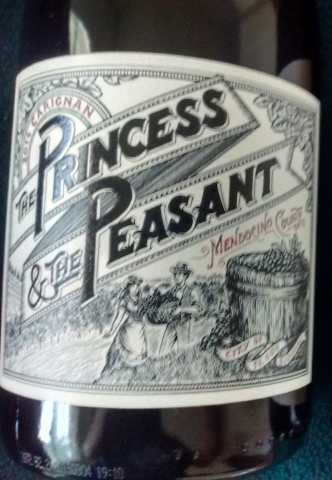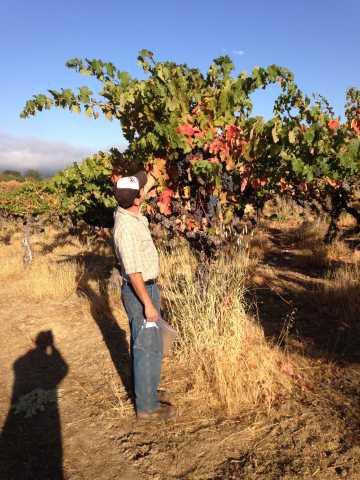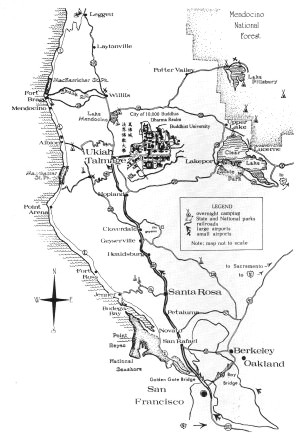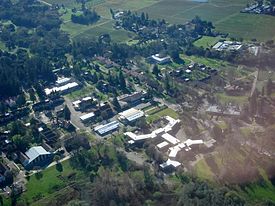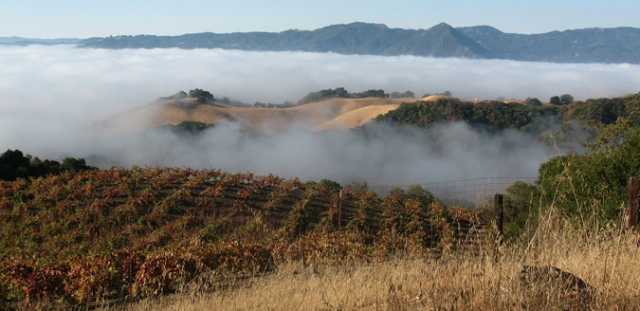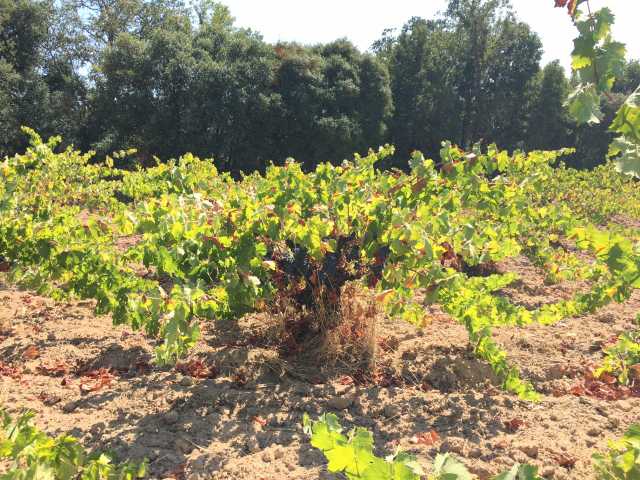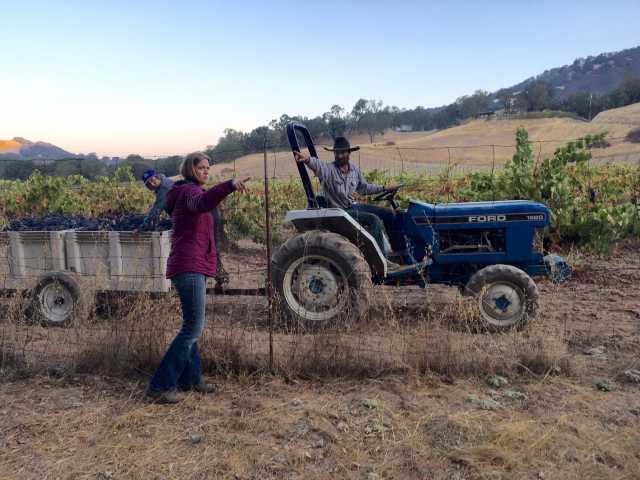-
2014 The Princess and the Peasant Carignan City of 10,000 Buddhas - USA, California, North Coast, Mendocino (5/24/2016)
The Princess and The Peasant 2014 Mendocino “City of 10,000 Buddhas” Carignan. I poured out a couple of ounces (as the fill level is very high) recorked the bottle, turned it upside-down and back again, and left it to rest for 5 hours.
Drank one glass with dinner, and placed the bottle in the fridge for later today.
Day #1: Gorgeous darker color (for Carignan), scents of black, wet earth, blackberries, but still somewhat shy. The glass, with bean and jalapeño chimichangas, is pretty darn good - yet, the wine obviously is holding back.
The mouth feel is unexpectedly substantial (13.5% ABV). Initial flavors of strawberry, very subtle dried baking spices, and fresh blackberries - very dynamic, very fresh. Then, a sudden jolt into another world.
The wine abruptly changes gears: full, rich, dense. Dark berry flavors become more concentrated; the earthy/dusty notes dominate the mid-palate. I look at the reference sheet - 3.8 pH. The finish is a smooth continuation of the moderately full-bodied blackberry preserves and earthiness. There is no acidity dancing on the tongue, encouraging the drinker to take another sip.
This Carignan is not a typical, raspy, brambly, acidic table wine. It is aspiring to be something greater, but there is a discordant bridge between the front-end and the mid-palate/finish: they are not in sync at this point.
Day #2: The blackberry notes are completely missing; the “City of 10,000 Buddhas” Carignan now reveals only aromas and flavors of strawberry coulis with a nice dusty element and the baking spices of Day #1.
Day #3: The Carignan provides a return in strength of the blackberry and earthy flavors with a hint of the strawberry on the dusty finish. The richness of the mouthfeel and the harmony of the flavors really tick off the right boxes! I do miss the characteristic acidity of the variety but, meeting the wine on its own terms, I have to say that it is a very tasty, unique product.
I believe that if it had come from any other place in California, the delicate balance would have tilted too much towards the heat of alcohol or that the spice and earth would not have framed the fruit with such subtlety. I am happy to have a few more bottles, but sad to hear that no more will be forthcoming. This singular vineyard’s Swan Song might be more “Walking on Sunshine” than “Moonlight Sonata”, but it is pleasurable all the same.
• The City of 10,000 Buddhas Monastery owns the vineyard land. The vineyard, predominantly Carignan grapes with a suspected interplanting of Valdiguie, Zinfandel, etc, rests along the Talmage Bench, about 400 feet above Ukiah. The site, planted in 1944, was neglected for years, with canopies approaching 12 feet in height! The Princess and The Peasant Winery bought and picked the grapes, ironically funding the demolition of the vineyard for the construction of a new building on the monastery’s grounds.
Posted from CellarTracker
